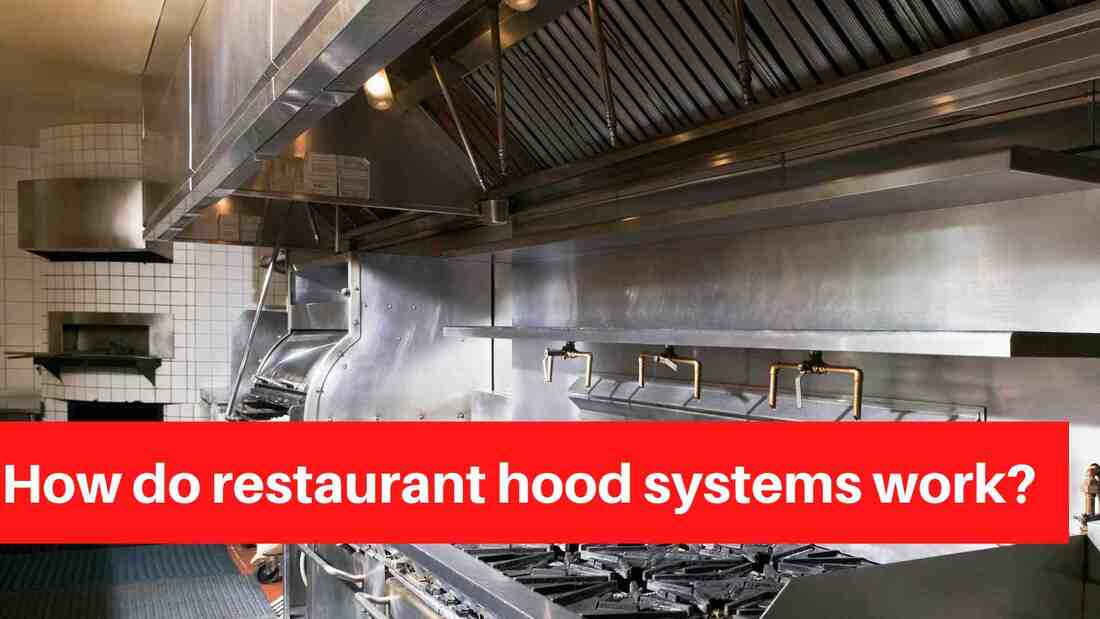|
How Restaurant Hood Systems Work
The kitchen can be a busy place, with everything from the savory aromas of a freshly cooked meal to smoke and steam from frying pans. Ventilation systems play an important role in helping restaurants stay safe and healthy for their employees and customers by keeping the air clean. In this article, we'll look at how restaurant hood systems work and the fundamentals of kitchen ventilation. A restaurant hood system is a type of ventilation system used in commercial kitchens to help remove smoke, grease, and odors from the air. Hood systems typically consist of three components: an exhaust fan, a filter, and a duct. The exhaust fan circulates air through the filter before venting it outside. Before they can enter the ductwork, grease and smoke particles are captured by the filter. Restaurant hood systems are classified into two types: vented and unvented. Vented hoods have an exhaust fan that vents to the outside. Filtered air is recirculated back into the kitchen by unvented hoods. To maintain peak performance, both types of hoods must be cleaned on a regular basis. Restaurant hoods are essential components of any commercial kitchen ventilation system. They aid in the removal of smoke, grease, and odors from the air, making it safer and more comfortable for cooks and employees to work in. Hoods also aid in the cleanliness of the kitchen by preventing grease and smoke from entering the ductwork or other areas of the building. Kitchen Ventilation System Types Restaurant hood systems are classified into three types: 1. Exhaust-only hoods: These hoods only exhaust the kitchen air. It is not recirculated. 2. Make-up air hoods: These hoods replace the air that is being removed with fresh air. 3. Energy recovery ventilators (ERVs): These hoods remove contaminated air while also recirculating some of the heat from the exhaust air to warm the fresh air coming in. This conserves both energy and money. The Advantages of Kitchen Ventilation Systems One advantage of having a kitchen ventilation system is that it can aid in the improvement of indoor air quality. This is due to the system's ability to remove smoke, fumes, and other contaminants from the air. This can result in a more pleasant environment for both employees and customers. Another advantage of having a kitchen ventilation system is that it can help you save money on energy. This is due to the system's ability to keep the air in the kitchen cooler, which can result in lower cooling costs. Furthermore, the system can help to prevent heat loss through the roof, which can help to reduce energy costs even further. Finally, having a kitchen ventilation system can help you get the most out of your kitchen equipment. This is due to the system's ability to remove grease and other deposits from your equipment. This can prevent rusting or corrosion of your equipment over time. Restaurant hood systems are an essential component of any commercial kitchen. They not only help to keep the air clean and free of smoke and odors, but they also protect your employees from potential health risks associated with insufficient ventilation. Investing in a high-quality system is well worth it for any business that wants to provide a safe and enjoyable dining experience for its customers. Comments are closed.
|
Archives
April 2023
Categories |
- Home
- Exhaust Cleaning
-
Hood Cleaning
- Hood Cleaning Service
- Kitchen Hood Cleaning Near Me
- Restaurants Hood Cleaning
- Kitchen Hood Cleaning
- Hood Cleaner
- Commercial Kitchen Hood Cleaning
- Restaurant Hood Cleaning Near Me
- Commercial Hood Cleaning
- Services for Hood Cleaning
- Food Truck Hood Cleaning
- Toronto Hood Cleaning Services
- Toronto Restaurant Equipment Cleaning
- Toronto Fire Prevention Cleaning & Degreasing
- Toronto Commercial Restaurant Kitchen Hood & Exhaust Cleaning
- Toronto Restaurant Exhaust System Cleaning
- Toronto Hospital and Long Term Care Homes Commercial Hood & Exhaust Cleaning
- Toronto Commercial Hood Cleaning
- Contact
- Institutions
- Hood Cleaning Toronto Blog
|
HOOD CLEANING TORONTO
647-931-1260 Toronto Ontario M5N 1M9 Hours of Operation Monday to Saturday 8:00 am - 6:00 pm https://hoodcleaningtoronto.ca |


 RSS Feed
RSS Feed

